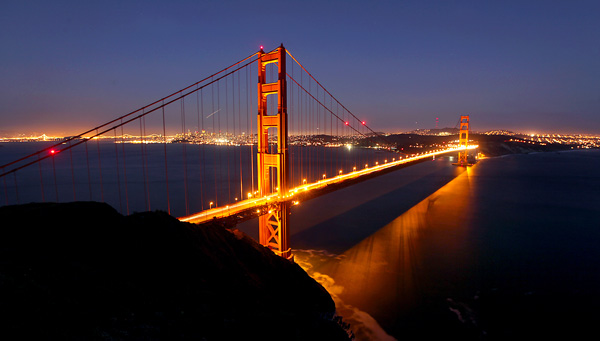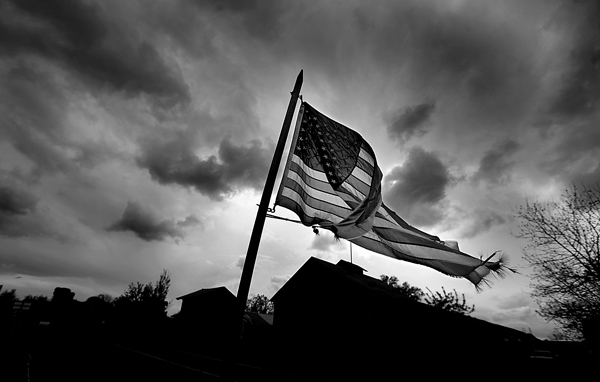The Sunday edition (May 27) of the Press Democrat published a photo of the Golden Gate Bridge for the 75th anniversary. I’ve had a few people call and ask me what were the technical aspects of shooting the picture.
Here is the photo un-cropped. And since I don’t have any trade secrets about how I work, I’ve included the logistical and technical information too.

The Golden Gate Bridge, Wednesday May 23, 2012 photographed from the Marin Headlands. The city of San Francisco will celebrate 75th Anniversary of the bridge this weekend. (Kent Porter / Press Democrat) 2012
Shooting the bridge in any light tends to lead to a good photograph especially if your schedule only allows daytime viewing. Others will disagree, but the bridge at twilight is the optimum time to photograph it’s intended beauty. That’s my reasoning anyway. The saturated colors of the lights and the hue of the sky make for an interesting and dramatic image.
First off, arrive early and stake out a place to photograph from. You’d be surprised by the amount of people who like the angle you’ve staked out. Stand firm! Don’t let someone needle you out of your spot. Politely suggest that they set-up their tripod right next instead of directly in front of you.
Bring a solid tripod. The Marin Headlands have the distinction of being the windiest spot on the planet earth. Well, okay maybe not the windiest but it’s really breezy up there. Even a little shake of the tripod will sabotage a long exposure.
Bring something warm to wear. You know the old saying “The coldest winter I ever spent was the summer I spent in San Francisco.” Yada, yada, yada. It’s true though, frostbite is a possible consequence of photographing SF’s treasure at night.
Charge those camera batteries. When it’s cold and the exposures are long on your camera, batteries will go dead quicker than bugs on a windshield.
Do take pictures of people with their cameras who ask for a portrait with the bridge in the background. It goes a long way in perpetuating that people are intrinsically friendly.
Strike-up conversations with other photogs waiting for the same light. After all, anyone crazy enough to brave 40 mph winds and a -10 wind chill will have a good story to tell about their lust for photographing bridges at night.
Have patience, the bridge was not built in one day. Staying an extra few minutes might make that awesome photo even awesomer. (I know it’s not a word)
Bring a flashlight. That cellphone you are using to light up the night will eventually crash. You may too, because the walk back might be relatively flat, but a cliff is a few gnarly feet away.
Bring food.
The photos I shot with the best light are within 10 minutes of each other. That window of “just right” is a small one. Knowing how your camera will perform during a long exposure is paramount in making a photograph that you can hang on a wall for people to ooh and ah about.
The above frame was shot at about 8:05pm, with the “disk” rated at 100 ISO. The f-stop was 6.3 and a 20 second exposure was used. Oh, the camera I used was a Canon 5d, jpeg quality on high and on the large setting. If we used RAW on every picture, we would fill up an entire warehouse archiving our shoots.
The reflection on the water of course are the lights from the bridge. The glassy appearance of the water is explained by the long exposure. Anything that moves will go blurry, especially water. The streak of light that is seen by the north tower are landing lights from a jet.
Of course, I probably should have shot the fireworks on Sunday but I needed a day off. Have their been better pictures of the bridge? Of course.
-Kent Porter

